Notice, pause and reflect: build reflexes, question exclusion and be intentional
Julianna Rowsell
Noticing, pausing and reflecting within your design process, and your product teams processes, you can use it in a lot of places, but it’s really about building reflexes, questioning exclusion and being intentional about inclusion. And what does that mean in terms of the design and delivery of products and services.
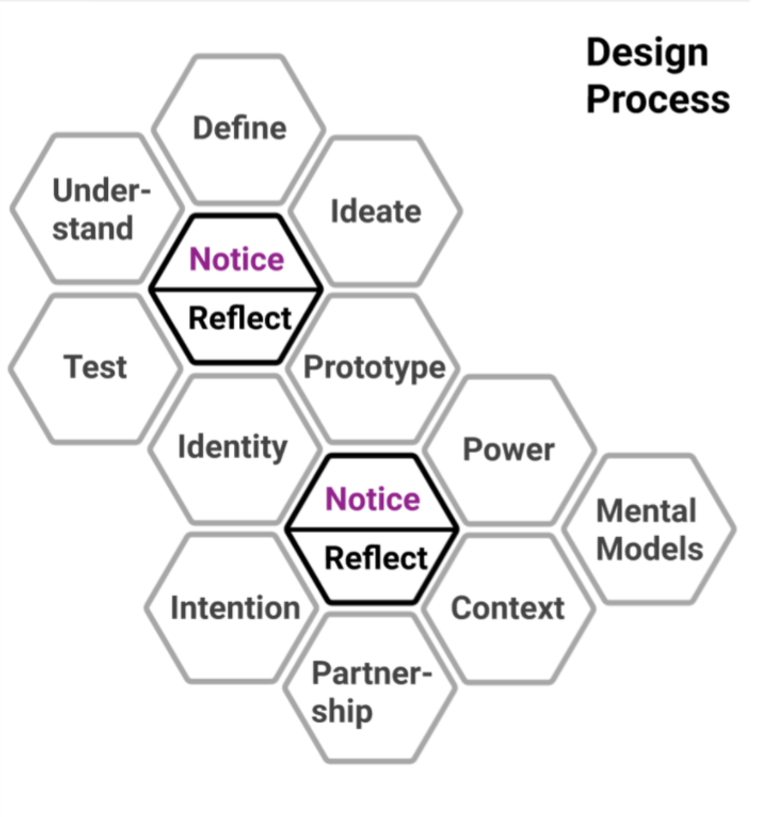
Adapted from the Stanford School of Design – K12 Lab Liberatory Design, Equity Centred Design Process
So, why would you do this?
This is a guide to help you bake accessibility and inclusive design into your processes, your methods, your ways of working. One of the first reasons would be it’s an exercise in the mind, and helps create new mental models and allows teams to have deeper conversations within the team about the work that’s happening, or has happened and it lowers the learning curve for new team members, it creates more awareness to the product decisions, and reduces tension between agility and inclusion within the product development. There’s a higher level of trust and confidence within the team because there’s more openness and transparency and better understanding of the decisions being made, where they come from, and what we’re prioritizing and valuing it also creates a more inclusive and resilient product because it reduces accessibility related technical debt and barriers to access through connections, methods and processes with people and outcomes.
A curious mindset can help us explore who we might be excluding
Here are some questions that might help you explore as a team, gain more insight into how your product works, and build awareness of how a more inclusive mindset can help us leverage better outcomes for people.
Why?
Why did we make these changes? Where did the need for the change come from?
What?
What are we going to do to re-validate our changes?
Who?
Whose needs are now met that were not met before? Why?
How?
How can we measure who is being excluded from this change? How can we intentionally include them?
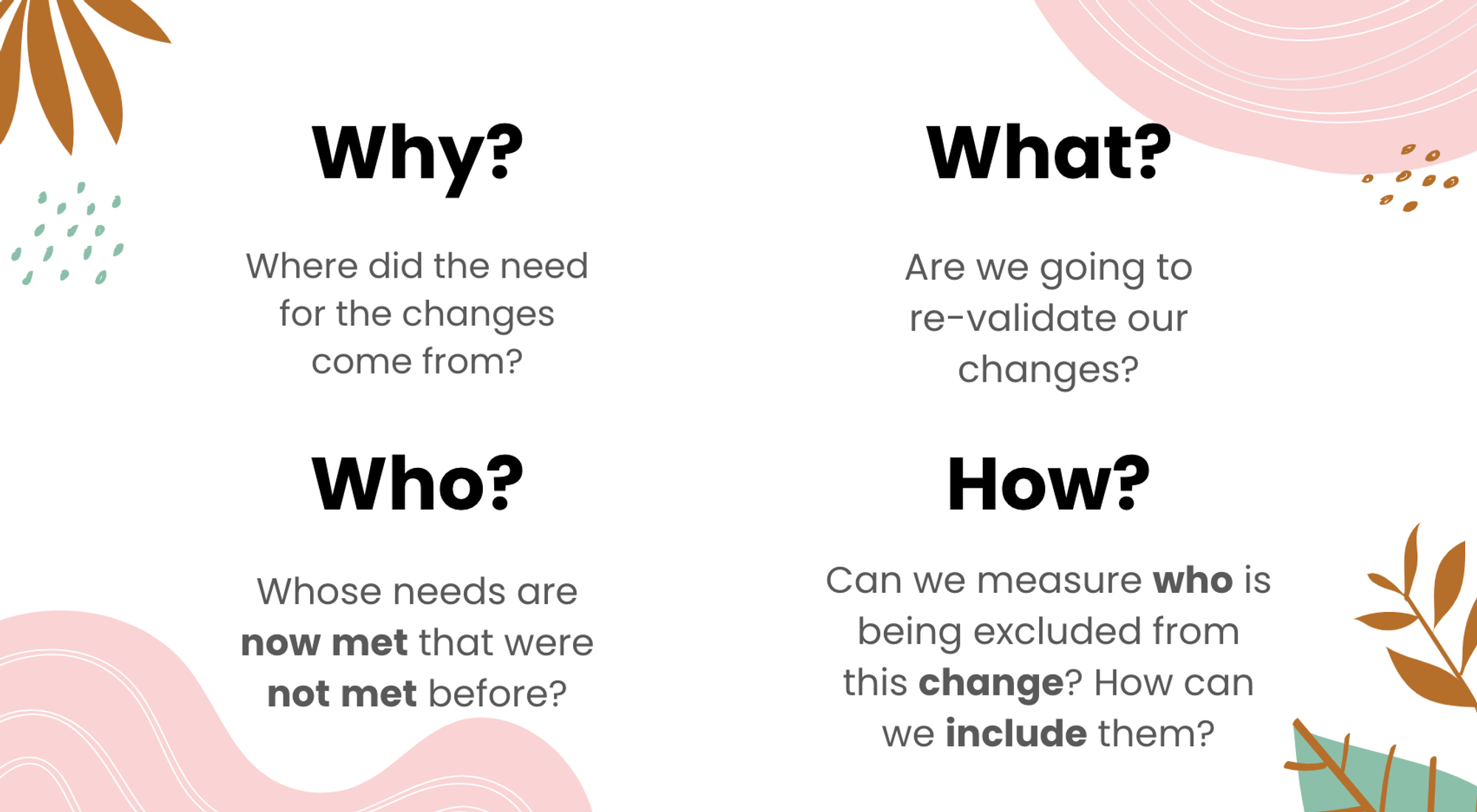
Key questions you can ask to help a team pause, notice and reflect on their design decisions, development implementations and user outcomes.
What is a champion?
Well, in reality, anyone can champion anyone can support the efforts around accessibility and inclusive design and you can start right down at you don’t really have awareness, develop some awareness, to have a working level capability to you’re a practitioner in the area to an expert, and anywhere along that cycle adds value, and it’s someone who practices Inclusion Accessibility and equity related efforts and their work and challenges or defends ways of working mindsets or processes and they effort to improve more inclusive outcomes. They promote these efforts within their teams within their communities within the work that they do themselves.
Who is a champion?
It’s anyone who’s trying to help, to question the work done, challenge things in reviews, recommend or ask about testing done and proposed review on how to meet user needs. It’s not about being an expert, it’s about forging new reflexes as a team and being the first one to try how it might go, and then innovate, and learn more and as you learn more and you’re trying to find a picture.
Continuously learning, iterating and ideating
Not every approach will work in the same way in the same team or same hope or same dynamic. And so we kind of are continuously learning the same way we look at things like continuous improvement or continuous development. The goal is to go through the questions taking time to pause and reflect honestly on the changes, needs and impacts on outcomes, what considerations went to the actions tasks or ways of working.
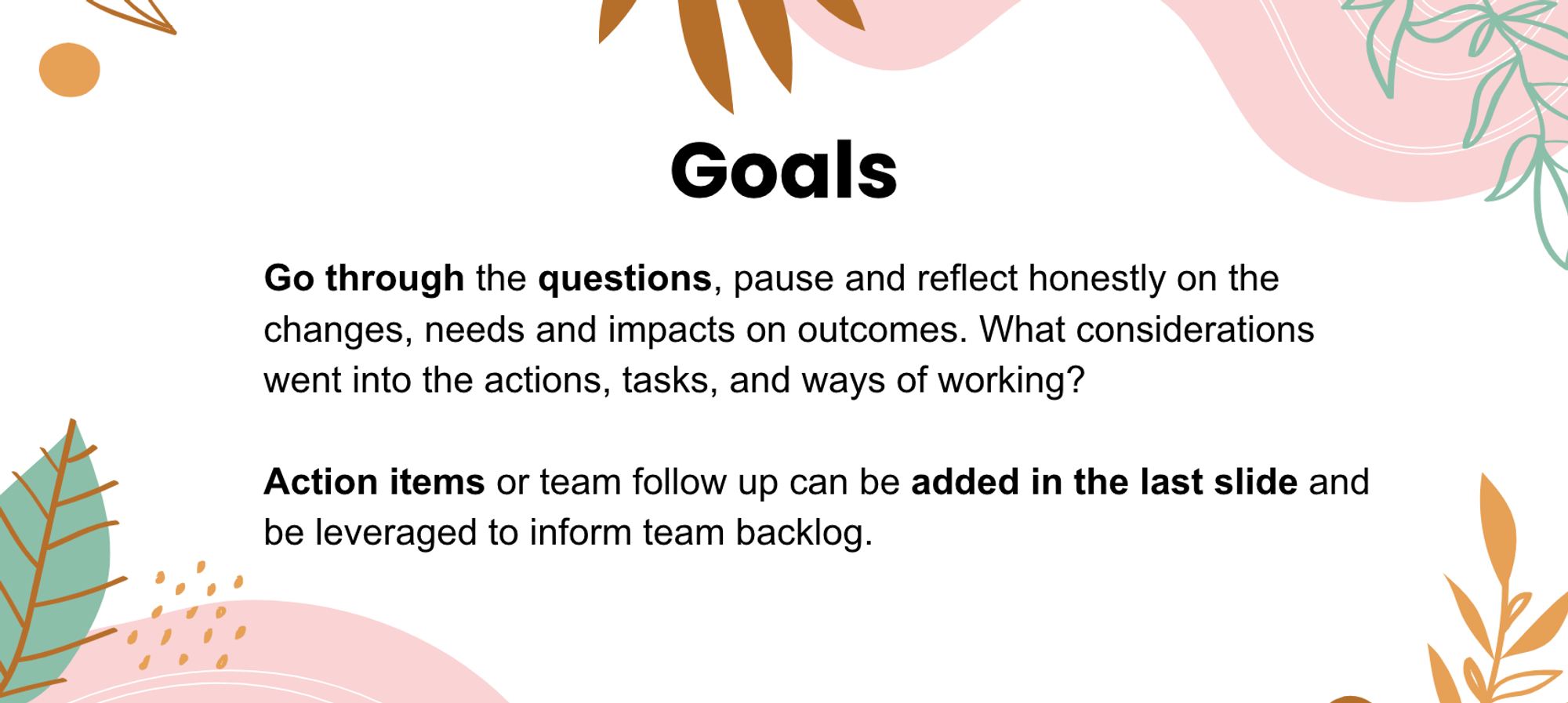
Teams love goals. In this case the goal with to go through the questions above, pause and reflect honestly
as a team on the changes, needs and impacts on outcomes. What considerations went into the actions, tasks and
ways of working? Develop action items or team follow-up mechanisms that can be added to backlogs and sprint work flows.
Because when you look at this from a systems thinking perspective, or even a service design perspective. When connects with what, why, who and how. Do we have those map insights so that we have decision logs can see why we’ve made a new decision, or if there was nuances in the decision making process. And do we know new things now that we didn’t then, and how do we then apply that across our products. And so you can connect this to values like putting people at the heart of your service or delivering a measurable outcome and taking care of each other. So when you treat resilience and wellness as an organizational responsibility, not just a character trait, you’re able to create more space for people to feel like they belong take risks, learn from mistakes and to speak openly, and we can prioritize support accountability and growth together.
When we’re looking at those deliverables, delivering measurable outcomes, and we’re working to achieve the greatest impacts of the greatest people in the greatest need. That means focusing on measuring how we can help people and to create lasting change in the government or the public service, or in industry. It’s not just a project milestone, it’s about measuring exclusion. And when we put people at the heart of our services we’re building inclusively, with diversity and accessibility into everything we do, and it’s from the start, it can’t be an afterthought in this situation. And in reality, it shouldn’t be.
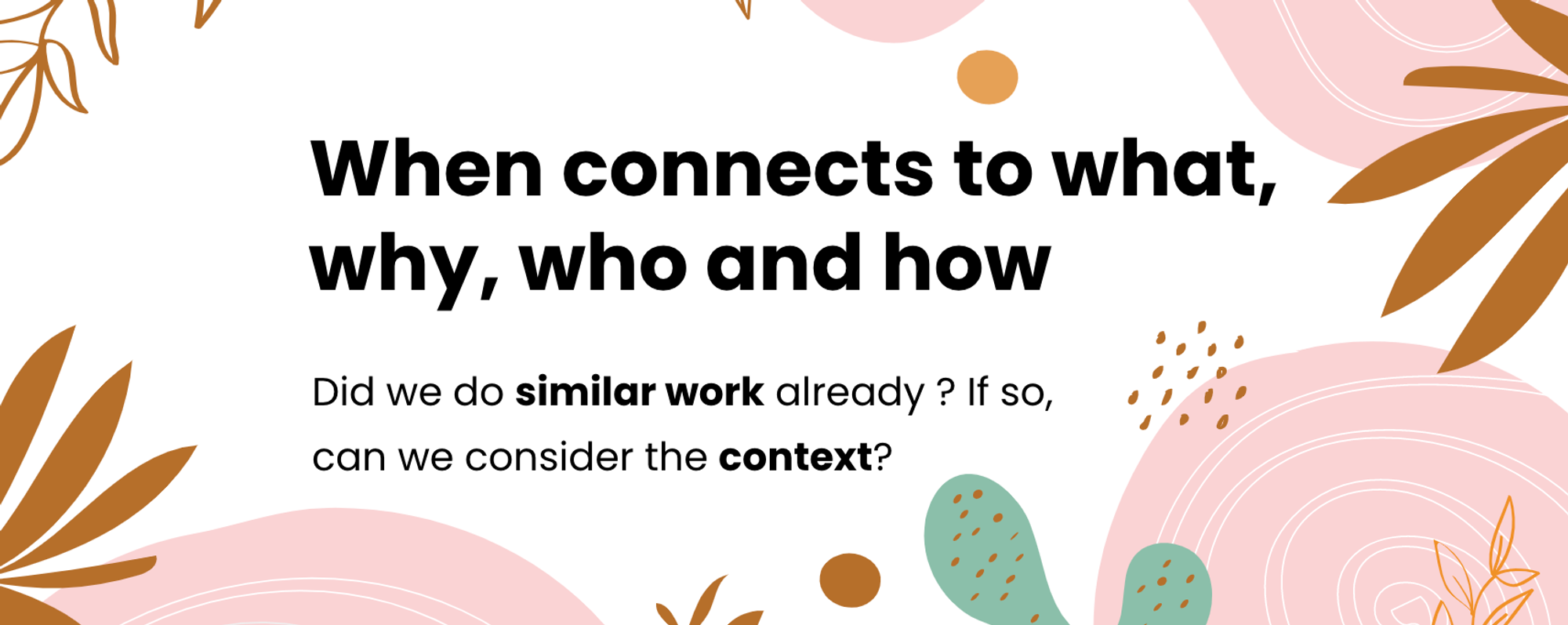
When connects to what, why, who and how. Did we already do similar work? If so, can we consider the context?
Do we know something differently now thats led to a new more informed decision?
Do participatory design, connect with people with disabilities
You have to work hand in hand with the people who use and operate services, which means talking to people with disabilities, it means talking to people who are culturally diverse, who are racially diverse who come from a variety of different backgrounds and skill levels, and who have different experiences, and you can leverage that to work with them to create products and services with people, instead of just for them. And so now that you’ve done this exercise as a team, what do you do next, well the follow up, what decisions were made when the team was impacted by the changes in the discussion.
- What conversation might need to happen next, and then your action items?
- What are the next steps as a team, or as an individual contributor, do we have things to add to the backlog, and are we committed to doing this again?
- Are we willing to iterate on the process, and kind of put ourselves in a place of maybe leaning into discomfort to ask these questions to kind of go against the grain a little bit?
- When you’re in a demo or review period actually taking the time to notice to pause and have reflection, and then we can take that into our own self reflection as well. We are all learning, it’s about practicing and repeating.
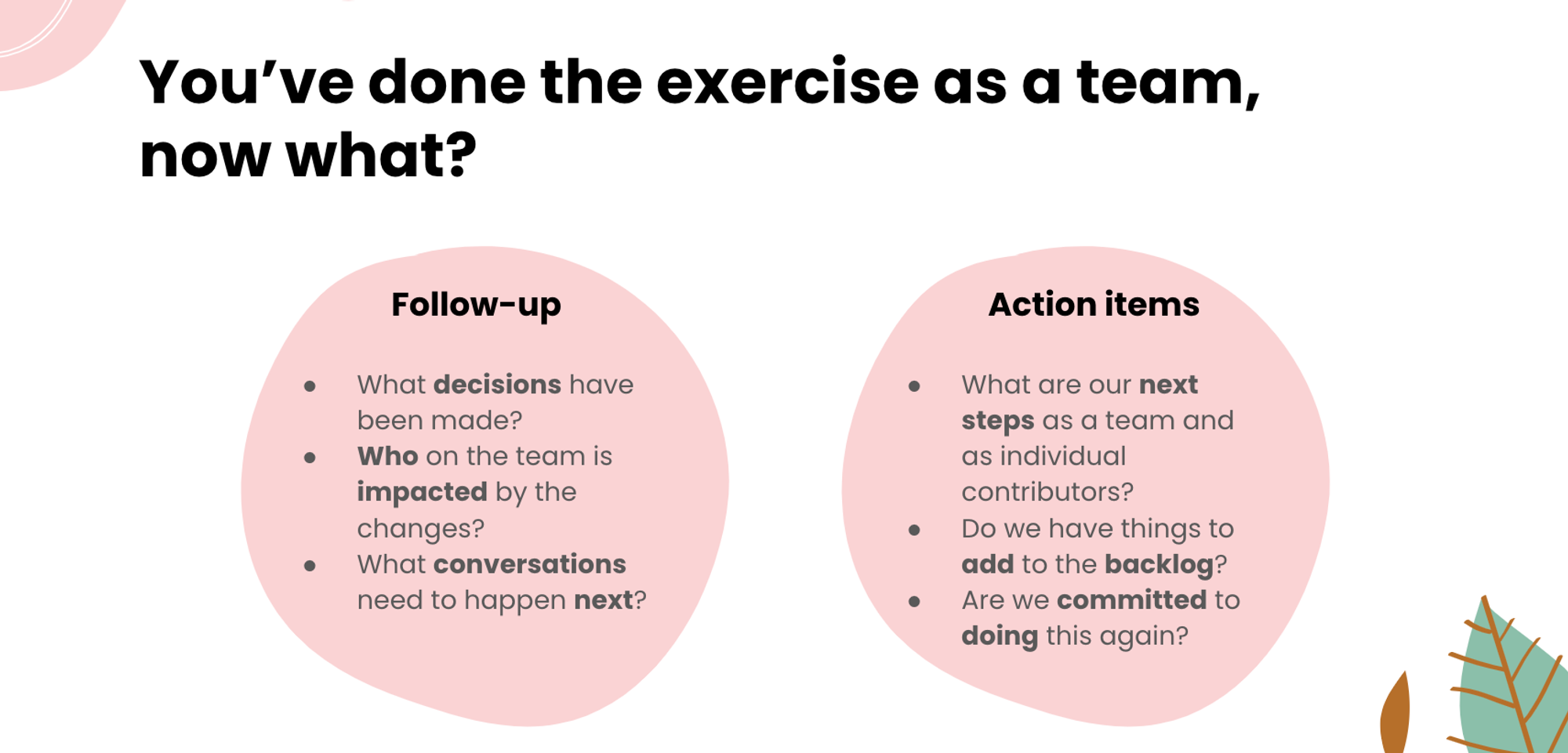
You’ve done the exercise, now what? Well consider what your follow-up items are and the create the action
items that stem from the conversation and exploration.
This is a guide, you can iterate on it to meet your team’s needs, try it out your next demo review or hold space to follow up during the next retro. There’s this really great quote from Richard Buchan about no one experiences the whole system people experience their own pathway through it. And this is where we have a great opportunity to leverage diversity to leverage our own mental toolboxes and our capacities to learn and change.
What you can do is to choose to be a catalyst champion this work in your role in your community, in your product work, and what you’re doing, and we can move the needle on accessibility and inclusive design.

